Cats prefer being outside because it allows them more freedom to explore, mount , hunt, and watch over their area.
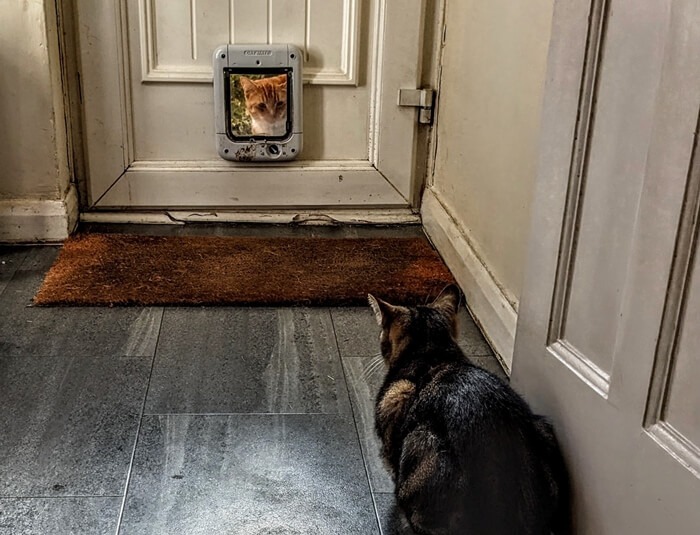
The ability to utilize a pet door is crucial for an indoor and outdoor cat since it allows them to come and go at will and to monitor their neighborhood at set times, decreasing the possibility that they may encounter other cats in the neighborhood. Here is a straightforward and easy-to-follow technique for training your cat to utilize a pet door.
Types Of Pet Doors Available
It’s crucial to get the right cat door for your cat. PetSafe makes a 2-way locking cat door that may be mounted on interior walls or doors for your feline friend’s convenience. The original plastic pet door from Ideal Pet Products’ Designer Series is made specifically for use outside the house.
You can secure your pet inside the house while you sleep or conduct errands thanks to the lockable, sliding panel on this door. The Cat Mate large cat/small dog 4-way self-lining door, for example, has a four-way locking system that allows the user to set the cat flap to be open, closed, in-access only, or out-access only.
Electronic pet doors now come with a dizzying array of options because to the proliferation of smart technology. There are cat doors that can be operated from an app on your smartphone, as well as key fobs or microchip access that only let certain creatures in. Some cat doors allow only a limited view of the outside world, while others don’t allow any at all.
One of the benefits of translucent doors is the increased sense of security they provide their users. The Sure Pet Care Microchip Cat Flap is helpful in homes with more than one cat since it prevents unwanted visitors from entering the home and provides an escape route for one of the cats if they become stressed.
Think about whether or not you have numerous cats and whether or not the litter box is large enough, sturdy enough, and easy to clean. If the cat door flap is positioned too high, your cat may have trouble entering and exiting the house. This holds true despite the brand of cat door you end up buying.
Training Techniques
1. Introducing Your Cat To The Pet Door
By introducing your cat to the pet door, make sure the cat door is large enough for your cat to fit through easily before you install it. You can either remove the flap altogether, tape it open, or prop it open so that training can begin.
Some cats, especially kittens and young cats that are still highly playful will ignore it and stroll right through. It’s not realistic to expect the cat to start using the door straight away, and you shouldn’t try to force it through it in the first place. Have fun exploring and playing with the opening to get your cat used to using it. Make sure kids can enter and exit the room easily before installing the flap.
One more option is to temporarily dismantle the door and replace it with something that just partially conceals the entrance, such a piece of fabric that hangs down barely a few inches. This will show your cat that moving forward is risk-free and won’t result in any unpleasant outcomes.
If your cat is easily startled, you may wish to make the cloth larger so that it drapes and covers the entire entrance. Next, you should give your cat some time to acclimate to its new home. The following step is to go through the real door.
2. Using Treats And Positive Reinforcement
It’s essential that the door’s function doesn’t frighten or shock your cat, and that it’s easy and pleasurable for your cat to go through. Pet parents can encourage their cats to use the door by rewarding them with high-value snacks like Life Essentials freeze-dried chicken dog Greenies Feline SmartBites or and cat treats.
However, if your cat has special dietary needs, you should be careful not to overindulge it with treats. Treats are a powerful clincher. It is crucial to reward your pet with something she values, as some cats prefer to be handled or play with high-value cat toys rather than consume goodies.
You can help your cat feel more comfortable crossing the threshold by using anything he particularly likes or values. In positive reinforcement, rewards play a vital role.
3. Don’t Go Over The Allotted Time
It is recommended that you do not train your pet for longer than five minutes at a time using the new pet door for sliding glass doors. If you try to train your pet for too long, they may get tired of it and get frustrated.
Training sessions should be fun for both the owner and the cat, lasting no more than five minutes in length, and being adjusted to fit your cat’s personality.
4. Recognize the Physical Signs of Tiredness and Agitation
Keep an eye out for signs of exhaustion in your cat, such as aversion to goodies, diversion from the task at hand, or inability to reach the end of it.
Displacement behaviours, also known as recurrent out-of-context behaviour, such as scratching their flanks or back, yawning, and licking their nose, are all symptoms of nervousness and even displeasure and should be watched for.
5. Keep Your Cool And Be Consistent
Patience is crucial when educating a cat to utilize a pet door. Your cat, like most other animals, will need some extra time to become used to the new door before it feels safe going through it.
Take care not to push or shove them as you escort them through the door, as this could cause them to feel frustrated or confused if the process is rushed. Patience and consistency is the key to proper training.
Fear of using the pet door
Most cats may be trained to utilize pet doors, but those that are especially fearful or anxious may get distressed when forced to travel through an enclosed passageway. Never lock the cat door while you’re training your cat to use it, as this may discourage your cat from using the door even when it’s unlocked.
If you want to prevent your cat from going outside at specific times of the day or night, you can teach it that the door always opens reliably and consistently, and then lock it when you don’t want it to.
Most cats will learn to adjust to their new home if given enough time and the opportunity (and if they are physically able to use the cat flap). Some senior cats lose movement and can’t easily use cat doors.
Conclusion
Before installing a pet door and teaching your cat to use it, you should think long and hard about whether or not it will be a good fit for your household. A security breach that allows other animals into your home could be a good thing, but it could also make your cat more hostile toward other cats.
A pet door is beneficial for you and your cat because it allows your cat the freedom to exercise its natural curiosity and engage in mental and physical activity.
You may also like

The Mysterious Purring: Decoding the Secrets Behind Your Cat’s Purrs
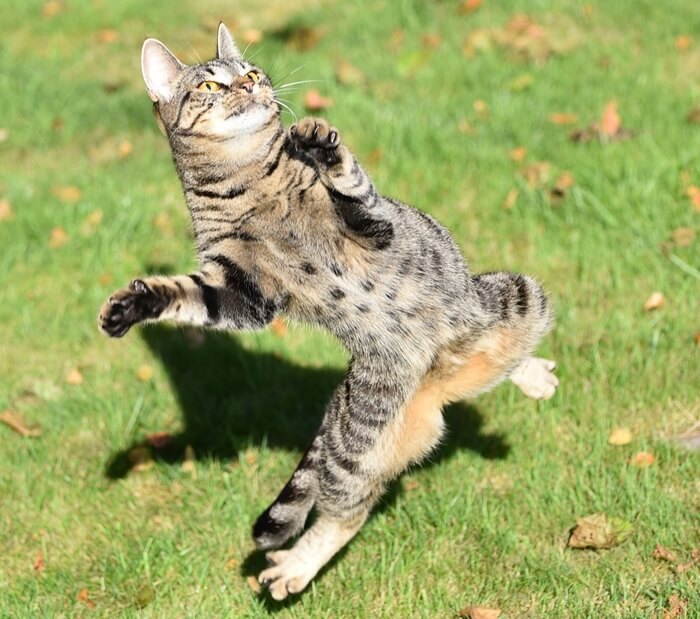
Understanding Cat Body Language: What Is Your Cat Trying to Tell You?
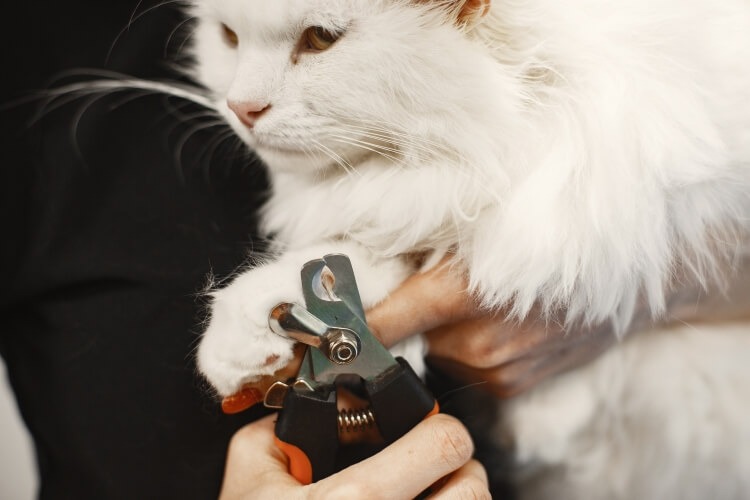
The Truth About Declawing: Is it Really Necessary?
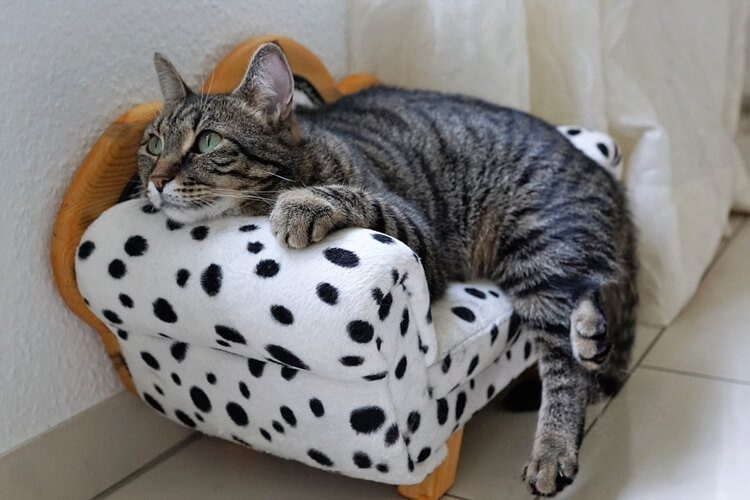
How to Create the Perfect Indoor Environment for Your Cat
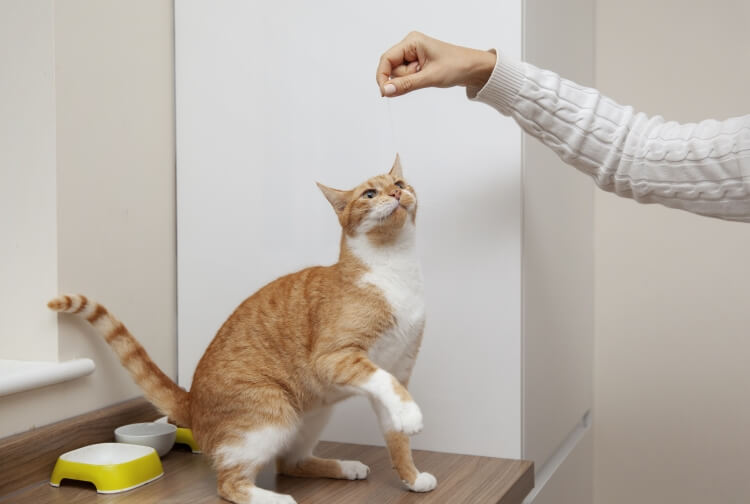
Guide to Cat Training: Tips and Tricks for a Well-Behaved Feline

A Complete Guide to Cat Breeds: Find Your Perfect Furry Friend

Training Your Cat to Use a Pet Door
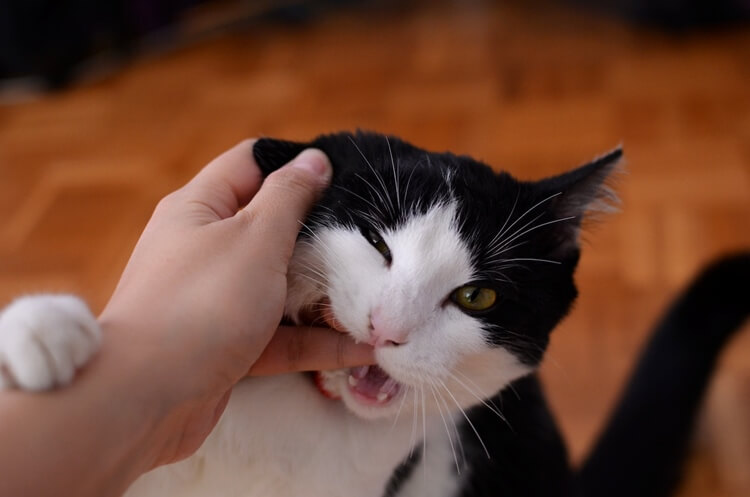
My Cat Keeps Biting Me: Causes and Solutions

Ultimate Guide on Traveling with Your Cat: Tips & Tricks for a Smooth Journey




